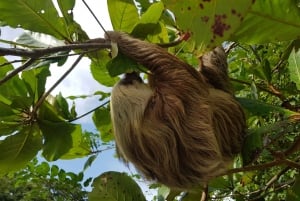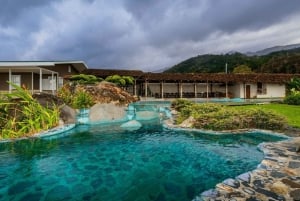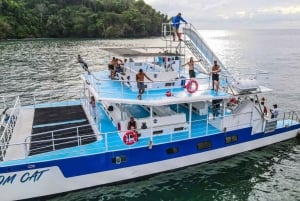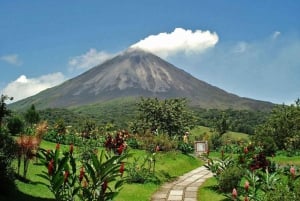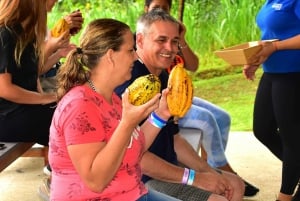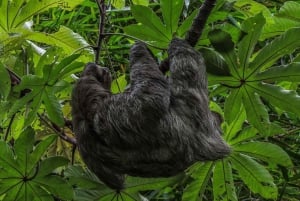Tortuguero National Park
Tortuguero National Park
In the northern uppermost part of the Limon Province, Tortguero National Park covers over 77,000 acres of some of the most biologically diverse ecosystems in existence. Reached only by airplane or boat, it is still one of the top attractions in Costa Rica and will fill your eyes with unbelievable sights. The mixture of it's tropical climate rainfall, and humidity levels allow it to host eleven different habitats, the primary reason this park has been included as a part of the Tortuguero Conservation Area. The beaches of Tortuguero are key nesting grounds for endangered sea turtles while the rivers within the park have populations of manatees, caimans and crocodiles.
The thick forests are home to jaguars, sloths, lizards, frogs and several species of monkeys, but the list does go on. Hosting 400 species of trees and another 2,000 species of plants you can imagine the species of birds that flock to this area. Peacocks, toucans, parrots and the rare blue herons are just a few of the exotic birds that live in this spectacular place. There is a variety of trails that are well marked located at each of the three ranger stations within the park, however if you have limited time choosing which area to see will be a tough decision. For those wanting to spend additional time in the park, camping is available in the north end of the park near the town of Tortuguero and limited facilities in the south town of Parismina. A few suggestions for those looking to visit - take one of the tours as you will see more in less time and they come with transportation to and from the park. Also carry a light raincoat and bug repellent as well as stash a few things to nibble on in your backpacks.
Area 77,032 acres
Location Limon Province
Precipitation 180 - 240 inches annually
Date of Creation 13 November 1975
National Reserves and Refuges near Tortuguero National Park include: Barra del Colorado Wildlife Reserve, Cariari National Wetlands, and Dr. Archie Car Wildlife Refuge.
Photo: © Hans Hillewaert / CC-BY-SA-3.0, via Wikimedia Commons




